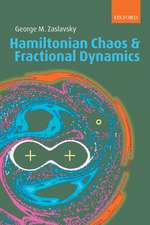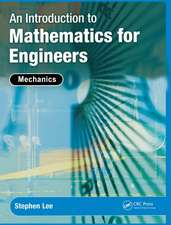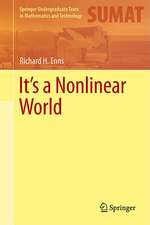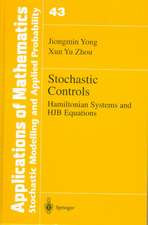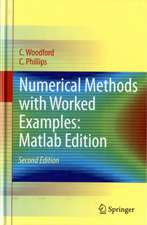Media Theory: Interdisciplinary Applied Mathematics
Autor David Eppstein, Jean-Claude Falmagne, Sergei Ovchinnikoven Limba Engleză Hardback – 11 oct 2007
| Toate formatele și edițiile | Preț | Express |
|---|---|---|
| Paperback (1) | 642.51 lei 6-8 săpt. | |
| Springer Berlin, Heidelberg – 15 oct 2010 | 642.51 lei 6-8 săpt. | |
| Hardback (1) | 651.19 lei 6-8 săpt. | |
| Springer Berlin, Heidelberg – 11 oct 2007 | 651.19 lei 6-8 săpt. |
Preț: 651.19 lei
Preț vechi: 766.10 lei
-15% Nou
Puncte Express: 977
Preț estimativ în valută:
124.60€ • 130.10$ • 103.13£
124.60€ • 130.10$ • 103.13£
Carte tipărită la comandă
Livrare economică 04-18 aprilie
Preluare comenzi: 021 569.72.76
Specificații
ISBN-13: 9783540716969
ISBN-10: 3540716963
Pagini: 340
Ilustrații: X, 328 p.
Dimensiuni: 155 x 235 x 24 mm
Greutate: 0.72 kg
Ediția:2008
Editura: Springer Berlin, Heidelberg
Colecția Springer
Locul publicării:Berlin, Heidelberg, Germany
ISBN-10: 3540716963
Pagini: 340
Ilustrații: X, 328 p.
Dimensiuni: 155 x 235 x 24 mm
Greutate: 0.72 kg
Ediția:2008
Editura: Springer Berlin, Heidelberg
Colecția Springer
Locul publicării:Berlin, Heidelberg, Germany
Public țintă
ResearchCuprins
Examples and Preliminaries.- Basic Concepts.- Media and Well-graded Families.- Closed Media and ?-Closed Families.- Well-Graded Families of Relations.- Mediatic Graphs.- Media and Partial Cubes.- Media and Integer Lattices.- Hyperplane arrangements and their media.- Algorithms.- Visualization of Media.- Random Walks on Media.- Applications.
Recenzii
From the reviews:
"The book takes its readers a long way from motivational examples at the beginning to the formal definition, algebraic, combinatorial, and geometric representations, to algorithmic problems, to several intuitive ways of visualizing media, and finally to serious applications. … The mathematician will find a nicely expounded theory with many ramifications. The theorems and proofs are clear and exhaustive, well balanced between rigor and intuition." (Reinhard Suck, Journal of Mathematical Psychology, Vol. 52, 2008)
"The book introduces a new mathematical structure called ‘medium’, modeling a physical or biological system that can be in any of a number of states; each state is characterized by a set of binary features, and differs from some other neighbor state(s) by just one of those features. … The book does not require much background knowledge and therefore is easily readable. Graduate students, researchers and university media may take advantage of the ideas therein." (George Stoica, Zentralblatt MATH, Vol. 1149, 2008)
"The book takes its readers a long way from motivational examples at the beginning to the formal definition, algebraic, combinatorial, and geometric representations, to algorithmic problems, to several intuitive ways of visualizing media, and finally to serious applications. … The mathematician will find a nicely expounded theory with many ramifications. The theorems and proofs are clear and exhaustive, well balanced between rigor and intuition." (Reinhard Suck, Journal of Mathematical Psychology, Vol. 52, 2008)
"The book introduces a new mathematical structure called ‘medium’, modeling a physical or biological system that can be in any of a number of states; each state is characterized by a set of binary features, and differs from some other neighbor state(s) by just one of those features. … The book does not require much background knowledge and therefore is easily readable. Graduate students, researchers and university media may take advantage of the ideas therein." (George Stoica, Zentralblatt MATH, Vol. 1149, 2008)
Textul de pe ultima copertă
The focus of this book is a mathematical structure modeling a physical or biological system that can be in any of a number of `states.' Each state is characterized by a set of binary features, and differs from some other neighbor state or states by just one of those feature. A simple example of a `state’ is a partial solution of a jigsaw puzzle, which can be transformed into another partial solution or into the final solution just by adding or removing a single adjoining piece. The evolution of such a system over time is considered. Such a structure is analyzed from algebraic and probabilistic (stochastic) standpoints.
Caracteristici
Provides an algebraic framework and fundametal results of Media Theory Reference for e-games, e-learning, e-genetics Includes supplementary material: sn.pub/extras




